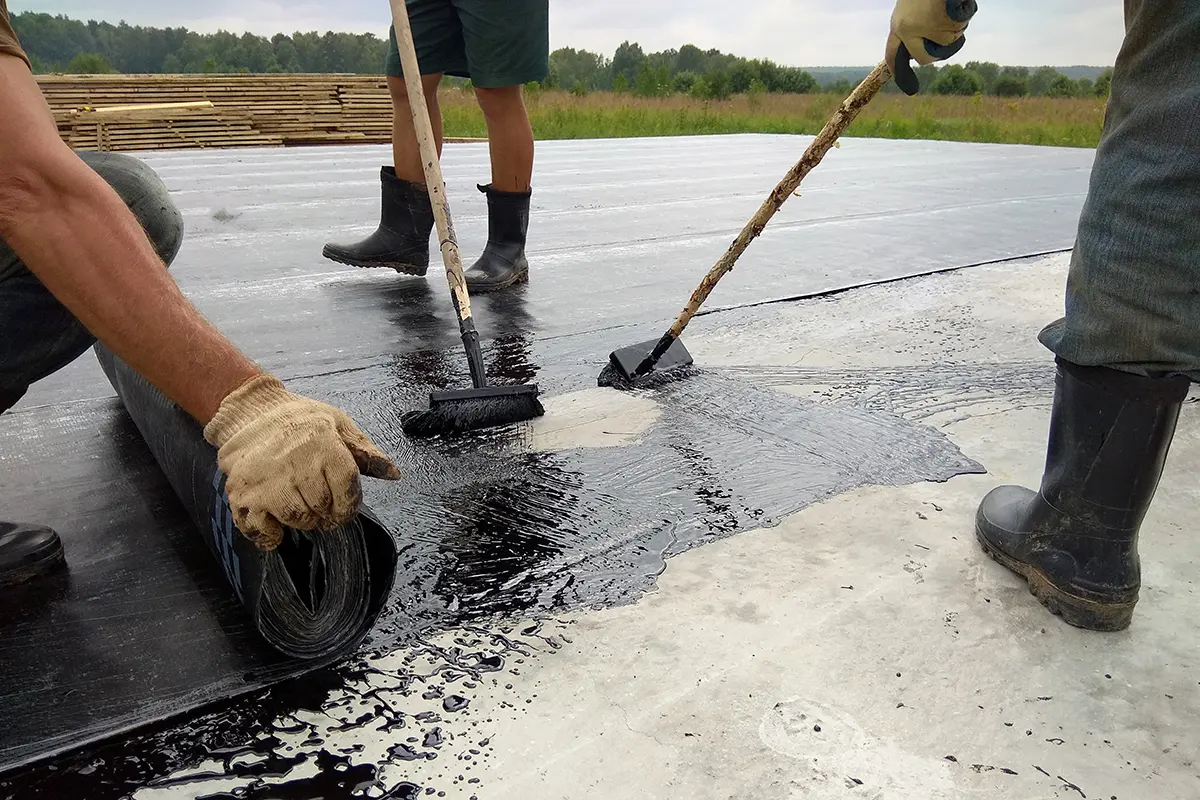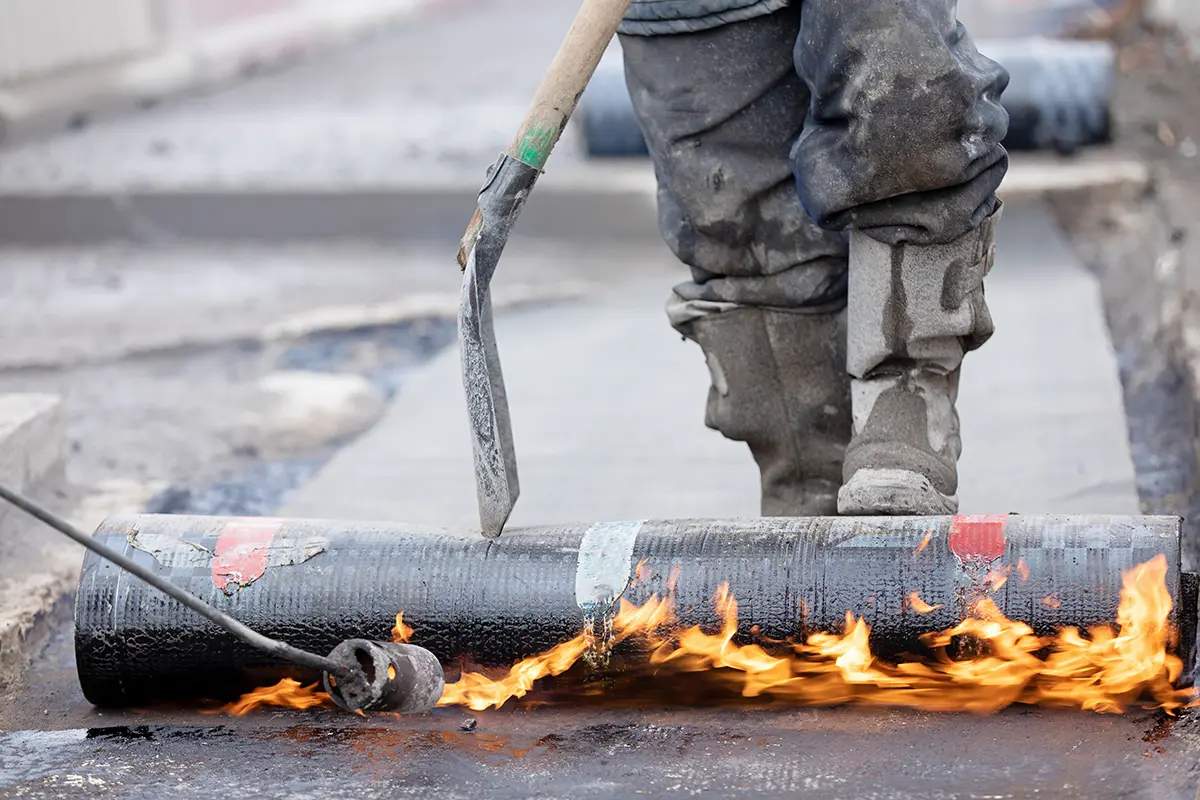Modified Bitumen Roofing: Installation, Applications, and Benefits in Commercial and Residential Settings
Roofing materials play a pivotal role in protecting buildings from the elements while contributing to energy efficiency, durability, and overall architectural integrity. One popular roofing option that has gained significant attention, particularly for low-slope and flat roofs, is modified bitumen roofing. This roofing system offers excellent performance characteristics, especially in environments subject to extreme weather conditions. Here we will provide an in-depth look at modified bitumen roofing, its installation process, applications in both commercial and residential settings, and its benefits over other roofing materials.
What is Modified Bitumen Roofing?
Modified bitumen roofing is an asphalt-based roofing system that has been modified with synthetic rubber or plastic polymers to enhance its performance, flexibility, and durability. This modification allows the roofing material to withstand extreme temperatures, both hot and cold, while maintaining its strength and elasticity. Modified bitumen systems are especially popular for low-slope roofs, offering a durable solution for water resistance and weather protection.
The two primary types of modified bitumen roofing systems are:
- APP (Atactic Polypropylene) Modified Bitumen:
This type incorporates a plastic polymer called polypropylene, which improves the membrane’s UV resistance and makes it easier to apply using a torch-down method. - SBS (Styrene Butadiene Styrene) Modified Bitumen:
SBS membranes are rubber-modified, providing enhanced flexibility. This allows the roof to expand and contract with temperature changes, reducing the risk of cracks and leaks.
Both APP and SBS modified bitumen membranes are commonly applied in either single-ply or multi-layer systems, often reinforced with fibreglass or polyester for additional strength.
Key Features and Benefits of Modified Bitumen Roofing
- Durability and Longevity:
Modified bitumen roofing systems are designed to be highly resistant to wear and tear, punctures, and impact damage. With proper installation and maintenance, these roofs can last between 20 and 30 years. - Flexibility:
One of the standout features of modified bitumen is its flexibility, particularly in SBS-modified systems. The rubber component allows the material to stretch and move with the building, making it an ideal solution for areas with temperature fluctuations or where the roof may experience some degree of movement. - Waterproofing:
The asphalt composition of modified bitumen makes it highly effective at repelling water, making it an excellent choice for flat or low-slope roofs where water drainage may be a concern. It is also resistant to pooling or standing water, a common issue with flat roofing systems. - UV and Weather Resistance:
APP-modified bitumen, in particular, offers excellent UV resistance, which protects the membrane from degradation caused by prolonged exposure to the sun. This UV resistance helps reduce energy consumption by reflecting sunlight and lowering heat absorption. - Easy Repair and Maintenance:
Modified bitumen roofing systems are relatively easy to repair compared to other flat roofing options. Minor damage can be quickly patched, and periodic inspections can help maintain the roof’s integrity over time. - Energy Efficiency:
Modern modified bitumen membranes are often designed with reflective surfaces or coatings that help to reduce heat absorption, leading to better energy efficiency, particularly in warmer climates. This reflective property helps keep buildings cooler in the summer, reducing air conditioning needs. - Fire Resistance:
Modified bitumen roofing systems often come with fire-resistant additives or layers, making them compliant with various building codes and safety regulations.

Installation of Modified Bitumen Roofing
The installation of modified bitumen roofing requires specific expertise, especially when using techniques like torch-down application or cold adhesive systems. There are several methods to install modified bitumen roofing, and the choice of installation method often depends on the type of material (APP or SBS), the roof structure, and the environmental conditions.
1. Torch-Down Method
This method is commonly used for APP-modified bitumen membranes, where the rolls of roofing material are heated with a propane torch to melt the asphalt and bond the layers together.
Steps in Torch-Down Installation:
- Surface Preparation:
Before applying the membrane, the roof surface must be clean, dry, and free of debris. A primer may be applied to improve adhesion. - Base Layer Installation:
A base layer (often a self-adhesive sheet or mechanically attached underlayment) is installed first, providing a smooth and even surface for the bitumen membrane. - Applying the Torch:
The bitumen membrane is slowly unrolled as the installer uses a propane torch to heat the underside of the membrane. As the asphalt melts, it bonds to the base layer or roof deck. - Rolling and Sealing:
As the membrane is applied, the installer rolls it firmly into place, ensuring full adhesion. Overlapping seams are heated and sealed to create a continuous, watertight surface. - Finishing:
Once the membrane is fully installed, a finishing cap sheet may be applied for additional protection, aesthetics, and UV resistance.
While the torch-down method offers a strong, durable bond, it requires skilled professionals due to the potential fire hazard posed by the open flame. Safety precautions are essential during installation.
2. Cold Adhesive Application
For SBS-modified bitumen membranes, cold adhesive application is a safer alternative to torch-down methods. Cold adhesives are typically solvent-based or water-based compounds that bond the membrane to the roof substrate without the need for heat.
Steps in Cold Adhesive Installation:
- Surface Preparation:
Similar to the torch-down method, the roof surface is cleaned and prepared, and a primer is often applied to ensure better adhesion. - Adhesive Application:
The adhesive is evenly spread across the surface using a roller or brush. The bitumen membrane is then rolled onto the adhesive, ensuring full contact. - Sealing Seams:
Seams and overlaps are sealed with additional adhesive or self-adhesive strips to ensure a watertight finish. - Weighting and Curing:
The membrane is often weighted down to ensure full adhesion during the curing process.
Cold adhesive installation is preferable for applications where fire risks need to be minimised or in areas where torch-down application is not allowed by building codes.
3. Self-Adhesive Installation
In some cases, modified bitumen membranes come with a self-adhesive backing. These systems are designed for easy installation, where the protective film is peeled off, and the membrane is applied directly to the roof surface.
Steps in Self-Adhesive Installation:
- Surface Preparation:
The roof deck is cleaned and prepped to ensure good adhesion. - Peeling and Sticking:
The self-adhesive membrane is positioned, and the protective film is peeled away as the membrane is unrolled and pressed into place. - Sealing the Seams:
Seams are sealed with a roller to create a secure, watertight bond.
Self-adhesive systems are popular for residential applications due to their simplicity and reduced labor costs.
Applications of Modified Bitumen Roofing
Modified bitumen roofing is an incredibly versatile system, suitable for a wide range of applications in both commercial and residential buildings. Below, we explore how this roofing solution is used in various settings.
1. Commercial Applications
In the commercial sector, flat roofs are common due to the need for efficient space utilisation. Modified bitumen roofing is particularly well-suited for flat and low-slope roofs, making it a top choice for:
- Office Buildings:
Office buildings with flat roofs benefit from the durability and weather resistance of modified bitumen systems. The flexibility of SBS-modified membranes also accommodates any structural movement, reducing the risk of leaks over time. - Retail and Shopping Centres:
Retail outlets, malls, and big-box stores often have large expanses of flat roofing. Modified bitumen’s resistance to water, UV rays, and general wear and tear make it ideal for these expansive commercial structures. - Warehouses and Industrial Buildings:
Warehouses and industrial facilities need roofing that can withstand heavy loads, foot traffic, and environmental stress. Modified bitumen roofing offers a strong, puncture-resistant option for these high-demand environments. - Hospitals and Schools:
Public institutions like hospitals and schools benefit from modified bitumen’s energy efficiency and fire-resistant properties, helping to meet building code requirements and reducing operational costs.
2. Residential Applications
While flat roofs are less common in residential buildings than in commercial structures, they are increasingly popular in modern and contemporary home designs. Modified bitumen roofing systems are well-suited for residential projects, especially for:
- Flat Roof Houses:
Homes with flat roofs, such as modern minimalist designs or Mediterranean-style houses, can benefit from the durability and weather resistance of modified bitumen. The ease of repair and maintenance also makes it a practical choice for homeowners. - Extensions and Additions:
When adding a flat-roofed extension to an existing home, modified bitumen roofing is an excellent option. Its flexibility allows it to integrate easily with other roofing materials, providing a continuous, watertight barrier. - Garages and Outbuildings:
For residential garages, sheds, and outbuildings with low-slope roofs, modified bitumen roofing offers a reliable, cost-effective solution that requires minimal upkeep. - Green Roofs:
With the growing popularity of green roofs, modified bitumen can be used as the waterproofing layer beneath the soil and plants. Its water-resistant properties and ability to withstand heavy loads make it ideal for supporting the additional weight and moisture associated with green roofs.
Comparison with Other Roofing Systems
When compared to other roofing materials such as EPDM, TPO, or built-up roofing (BUR), modified bitumen holds several advantages:
- Better Durability:
Modified bitumen roofing is often more durable and puncture-resistant than EPDM and TPO, especially in high-traffic areas. - Flexibility in Cold Weather:
SBS-modified membranes retain their flexibility in cold weather, reducing the risk of cracks or damage due to freezing and thawing cycles, an advantage over some other roofing types. - Multiple Installation Options:
The availability of various installation methods—torch-down, cold adhesive, and self-adhesive—provides versatility that can meet different project requirements and building codes.
Conclusion
Modified bitumen roofing is a proven, reliable solution for both commercial and residential roofing needs, particularly in low-slope or flat-roof applications. Its durability, weather resistance, flexibility, and ease of repair make it a popular choice for builders and property owners alike. With a lifespan of up to 30 years when properly installed and maintained, modified bitumen roofing provides long-term value and protection against the elements, ensuring that your building—whether it’s an office, retail space, or home—remains safe, dry, and energy-efficient for years to come.
For more information on Modified Bitumen Roofing contact Associates Roofing Partnership.
